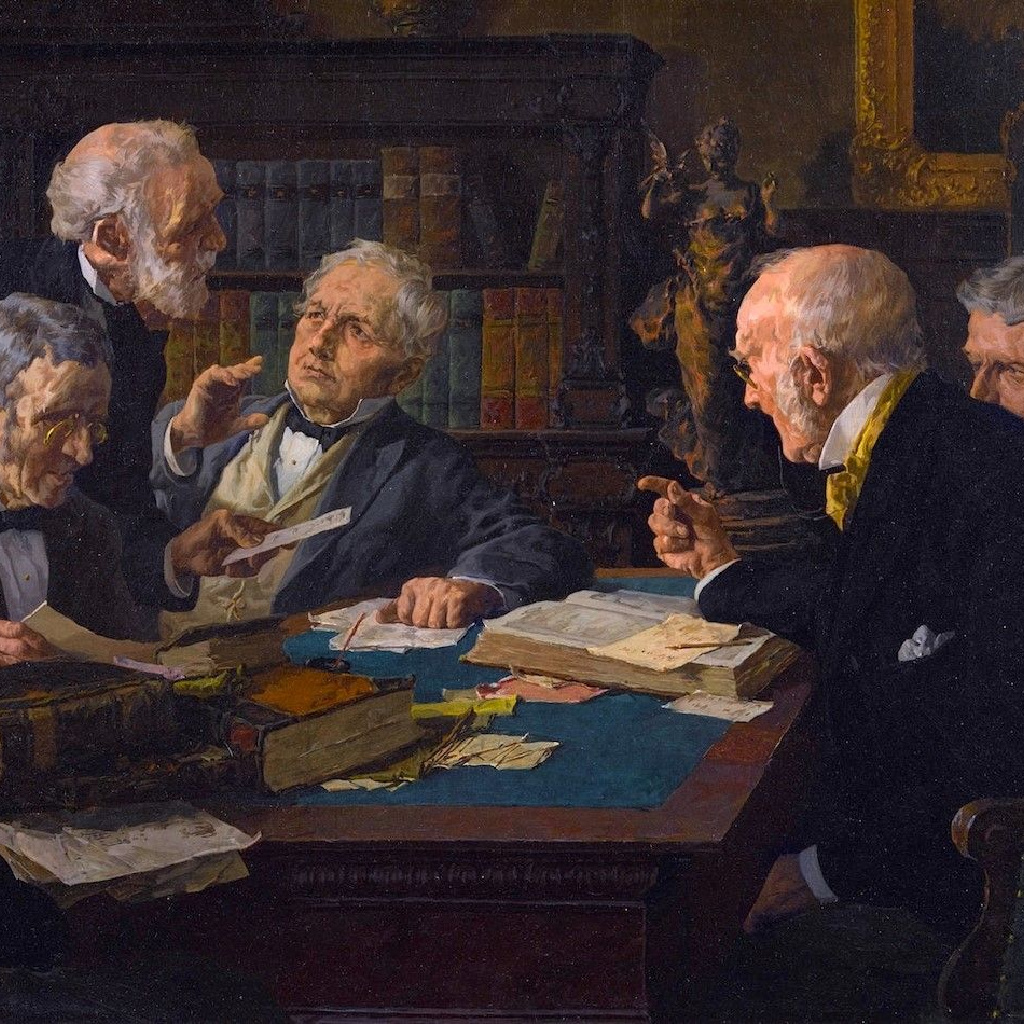As the German army invaded Belgium during World War I, a rumor arose among the Allied Powers that German soldiers had brutally mutilated a Belgian baby. Many people had claimed to have seen the baby, the press reported the event as fact, and it soon became conventional wisdom.
Historians now recognize this “event” as mythological.
There is no solid or reliable evidence that there ever was such a baby, but it was a horrendous story that everybody who was already opposed to the Central Powers seemed to want to believe. This is a prime example of a phenomenon seen elsewhere: if a belief fits into a framework or narrative that is strongly held about an emotionally-charged issue, this belief takes on a very sophisticated life of its own.
Sadly, this kind of misinformation has sometimes occurred with regard to suicide, a sensitive area that merits our tireless attention, careful analyses, and continued intervention efforts.
On occasion, the nexus of interrelated beliefs regarding LGBT+ suicides among members of The Church of Jesus Christ of Latter-day Saints have been publicly mistreated or exaggerated.
Certainly, unlike the Belgian case, there are many instances of LGBT+ Latter-day Saints who have tragically taken their own lives. Every suicide is a loss that we should mourn and seek to prevent in the future.
The complexity of the full picture of suicide is an important starting place for productive public discussion. Mental health experts in partnership with GLAAD—an LGBT+ advocacy group—advise against linking “a specific policy (or its absence)” to suicide or suicide prevention. They further advise against normalizing “suicide by presenting it as the logical consequence of the kinds of bullying, rejection, discrimination, and exclusion that LGBT+ people often experience.”
Making hasty assumptions about those causes, even when based on comments from family or friends or media reports, can result in statements that are later proven to be inaccurate.
All communities—including and especially communities of faith—can and should do more to intervene to help those who are experiencing signs of suicidality. Christians generally, and members of the Church of Jesus Christ specifically, must be at the forefront of expressing and communicating compassion and comfort, and extending genuine fellowship to those who may feel on the margins or who are experiencing acute emotions, depression, or feelings of isolation.
But, rather than acknowledging the value of support in faith communities, it’s become common in recent years to hear people asserting that research proves religion itself is driving some of the suicide trends. As a researcher with years of work in this area, let me be clear: The claim sometimes made that there is an established massive suicide phenomenon among LGBT+ Latter-day Saints directly attributable to Latter-day Saint theology—or policies—is not supported by current data and scholarly research.
Again, as mental health experts in partnership with GLAAD observe: “The underlying causes of most suicide deaths are complex and not always immediately obvious. Making hasty assumptions about those causes, even when based on comments from family or friends or media reports, can result in statements that are later proven to be inaccurate.”
It’s difficult to rigorously test claims regarding suicide causality to peer-reviewed standards. But people may be surprised how little evidence there is for related side-claims such as, in the words of one celebrity, Utah has experienced a surge in suicide “because of the shame (LGBT+ teenagers) feel from the Mormon Church.”
Lamentably, these beliefs have sometimes taken on a life of their own, regardless.
I have spoken to sophisticated, intelligent colleagues in the social sciences who take the theology-suicide correlation as a fact, even when confronted with conflicting information—including objective, official numbers that do not provide any evidence for the claim.
Highly visible groups or individuals trying to use suicide numbers to pressure the Church into changing its theology sometimes report shadowy statistics that show suicide rates many times higher than can be confirmed by the official numbers. Finally, the blogosphere and non-peer-reviewed academic articles give voice to individuals trying to tie various statistics—some more reliable than others—together in an attempt to provide support for the narrative that decisions coming from Salt Lake are responsible for the deaths of large numbers of LGBT+ members.
Not only is this information often inaccurate, but it goes against GLAAD’s own guidelines, and may in fact do more harm than good for some LGBT+ people.
While there are genuine and understandable emotions and mourning that surround suicide and suicidality in the LGBT+ community and well-beyond, sometimes among advocates there is a self-admitted agenda involved: use suicides to force the Church into a corner in regards to its heteronormative theology of Heavenly Mother and Heavenly Father.
Those that weaponize this tragedy usually imply that there’s something particular about Utah relative to the background stressors that sexual minorities feel in the United States, and there is simply no strong social scientific evidence for that.
If, for instance, it can be empirically established that the Church’s theology on this matter is “causing” LGBT+ deaths, then, the argument runs, the Church will have no choice but to change its teachings on marriage. I will leave it to the theologians and philosophers to discuss the validity of this reasoning, but this effort is misguided on social science grounds.
The social sciences as a whole have, for the most part, shied away from trying to establish firm causal connections between religion-specific theological beliefs and different social and personal outcomes. There are a couple of good reasons for this. One is the conflation between theology, norms, and culture.
Even if a study using panel data and fixed-effects were to establish that LGBT+ suicide rates were higher in county subdivisions with high Latter-day Saint populations, or a longitudinal, large-N, case-controlled study of randomly selected LGBT+ Latter-day Saints showed higher suicide rates for those who stayed in the Church (the studies so far have not even started to approach this level of rigor), it would still be an open question whether the effect was from the theology per se, or from some social or cultural elements within the religious community.
Defining and operationalizing theological beliefs is inherently difficult. Would it be the theology itself, or a particular emphasis or tone in the theology?
As the history of religion has shown, people can read rather simple statements of belief in drastically different ways. Trying to stick theological beliefs into survey questions requires trying to stuff the nuance of a graduate theology seminar into an instrument designed to also reach high school dropouts.
This is not to say that there cannot be studies that suggestively indicate a certain trend one way or another—my own published research has sought to do some of this. But, until we can randomly assign people different beliefs and follow them forward to measure their later outcomes, any attempt to rigorously connect a theological belief to a particular outcome is tenuous at best. I for one am not holding my breath that a slam-dunk, peer-reviewed, gold-standard paper definitively connecting the Church’s heteronormative position on families to higher suicide rates of its LGBT+ members is anywhere on the horizon. People trying to pressure the Church to change will have to look elsewhere for their rhetorical tactics.
However, as mentioned above, there are many side-issues that, while not directly addressing this theology-LGBT+ suicide connection, are somewhat related even if these claims, by themselves, do not provide reliable evidence for the theology-LGBT+ suicide narrative. For example, is there an LGBT+ suicide crisis in Utah? Are Latter-day Saint LGBT+ individuals more suicidal than their secular counterparts? Is there a relationship between Latter-day Saint orthodoxy among LGBT+ members and mental health? With statistical rumor and innuendo flying around this issue, it is difficult to get a handle on what statistics have grounds and which ones do not.
For example, Utah’s higher than average suicide rate is often tied into a broader explanatory narrative that the higher rates are directly attributable to LGBT+ Latter-day Saint youth being rejected by their parents. While it is true that Utah has a higher-than-average suicide rate (along with virtually every other state in the region), and that LGBT+ individuals are at a higher risk for suicidality, no study has actually tested whether the rates of LGBT+ suicide in Utah are statistically significantly higher than those in the surrounding, comparative states.
There are good reasons for this, as this statistic would be very difficult to come by, as the denominator (the total LGBT+ population) is likely a “grey” figure (difficult to accurately calculate) in an intensely conservative state like Utah. Therefore, there is not sufficient evidence to warrant the claim that there is an LGBT+ suicide epidemic in Utah.
There is a suicide epidemic, and given that LGBT+ individuals are at higher risk for suicide in the general population we can assume that, all things being equal, LGBT+ suicides are a significant part of the picture of the Utah crisis, but those that weaponize this tragedy usually imply that there’s something particular about Utah relative to the background stressors that sexual minorities feel in the United States, and there is simply no strong social scientific evidence for that.
Finally, there is also an additional claim tacked onto this narrative that makes absolutely no sense: that the increase in suicides in Utah is due to the Church’s stances. However, if LGBT+ youth are committing suicide because of heteronormative decisions coming out of Salt Lake City, then we would expect fewer suicides as the Church has made a number of changes to help better minister to those who experience same-sex attraction or who identify as LGBT+—changes that some have argued reflect a liberalizing on these issues. This is especially true for the very particular claim that the Church’s November policy was responsible for heightened suicides in Utah, as the state of Utah saw a decrease after the policy rollout. (See here and here.)
If you are contributing to the narrative that the only orthodox Latter-day Saint LGBT+ is a dead one, then you may in fact be hurting Latter-day Saint LGBT+ youth.
On the question of whether religiosity among LGBT+ Latter-day Saints fuels mental health problems that may lead to suicide, the fact is that the literature on religiosity and LGBT+ mental health is complex. Generally, religiosity (both as a social behavior and worldview) is associated with a wide range of mental health benefits, but LGBT+ individuals ensconced in conservative religious traditions often experience discrimination and other stressful experiences, so the interactions and countervailences of these two forces play out in ways that reflect the nuanced, multifaceted theological views of the LGBT+ religionists themselves. What we know is that there is no clear, one-line takeaway that would prove empirically how an LGBT+ religionist should live their life in order to maximize their mental health.
One can cherry-pick some studies to try to make a case that orthodox Mormonism is absolute poison for LGBT+ individuals. For example, John Dehlin’s dissertation research has tried to make the point that orthodox LGBT+ Latter-day Saints are consigning themselves to a life of misery. However, most studies show a more textured picture, with practicing Latter-day Saint LGBT+ individuals scoring higher on some measures and lower on others. More to the point, the extent to which particular, fundamentally heteronormative theological beliefs such as the existence of Heavenly Mother directly influence LGBT+ mental health is untested and will probably remain so given the complexities mentioned above.
As an example of the nuance in this area, my own work—the only research on the subject based on a large-N random sample (i.e. not based on people recruiting others through social media or referrals from others—which has the potential to tap into a particular, skewed pool) has actually shown that Latter-day Saint LGBs in Utah are mentally healthier than non-Latter-day-Saint LGBs.
Now, it is likely that there is a selection bias at play, with LGBs for whom Mormonism works staying while others leave, but that only serves to confirm the complexity of the issue. Ideologues too often swoop in where careful scholars fear to tread, and, in contrast to researchers that are sure to qualify or hedge their conclusions until we have the clear confirmation, others take the barest threads of circumstantial evidence to push a grand narrative.
This would normally be benign—people can believe what they want to believe—but the fact is that those pushing a narrative of mass suicidality among LGBT+ youth are themselves risking suicide contagion in order to win rhetorical points (this point, meant for the population in general, has actually been made by Rick Savin-Williams, the father of gay youth health research). Belief in LGBT+ Mormon suicide pandemic in the absence of good social science evidence may actually contribute to the troubling phenomenon of heightened suicidality among the LGBT+ population by normalizing suicide rather than resiliency, hope, and life.
Is the Church and its practices and theology responsible, or is it the belief in the narrative itself? If you keep pushing the idea that all gay Latter-day Saints are depressed and suicidal, then those who are most vulnerable to that narrative may start to believe you. If you are contributing to the narrative that the only orthodox Latter-day Saint LGBT+ is a dead one, then you may in fact be hurting Latter-day Saint LGBT+ youth.
The parents who will not speak to their child because the child is gay are just as sad and hurtful as the gay child who will not speak to her parents because they believe that exaltation involves the eternal union of a male and female pair. Scorched earth theological-cultural warfare is not going to help matters. More than ever, we need a deep understanding of well-regarded social science and empirical research, coupled with a respectful, nuanced appreciation of where people stand, and mutual respect and willingness to help loved ones who may be on different sides of these complex questions.


















